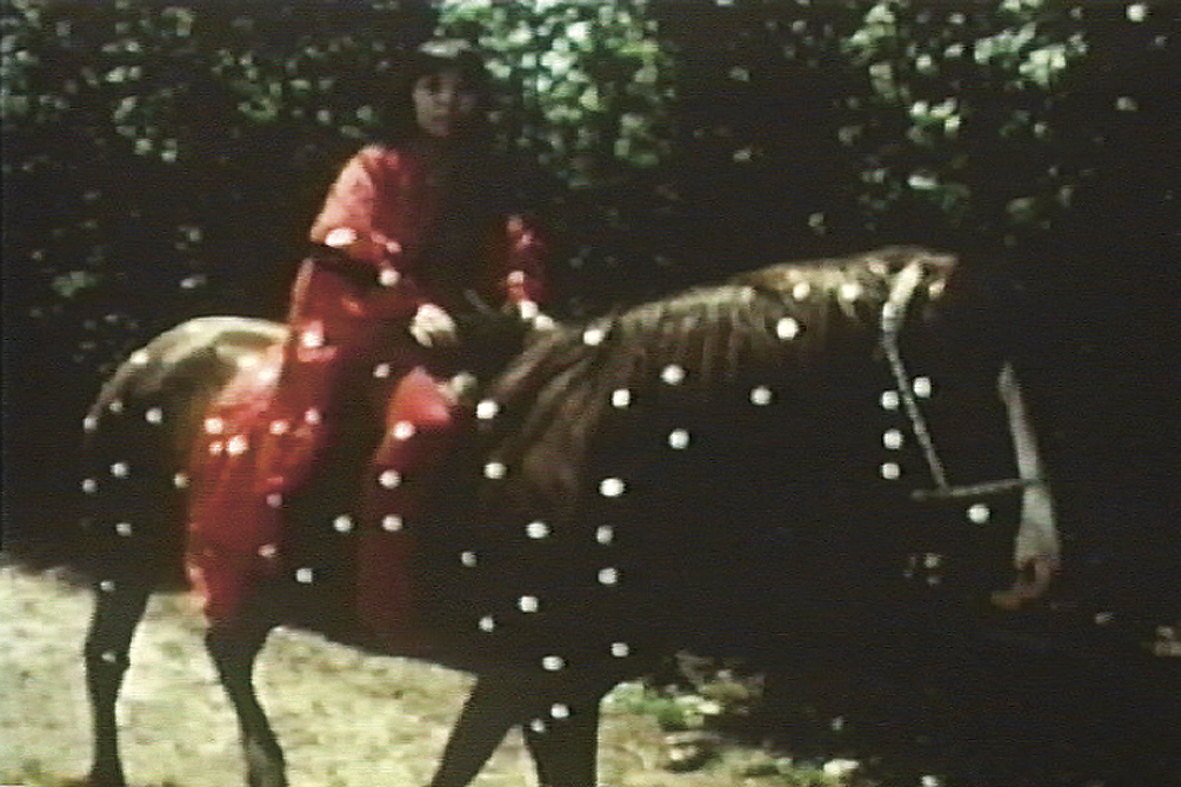of yayoi kusama’s polka dot mania.
In Yayoi Kusama‘s 1968 film, Self-Obliteration, the polka dot becomes the vehicle for speedy, joyous, maniacal obsession turned to madness. Throughout the film, Kusama paints polka dots on anything and everything, as if she might turn the world into one giant clown costume. It makes for a quintessential 60s document: what at first seems festive and light (let’s paint polka dots!) grows darker, more sinister, and more troubling as the film progresses; what at first seems to open up possibilities by film’s end is so fragmented and fractured that it leaves one dizzy, almost nauseous.
The polka dots at first seem like points of white light on the way toward a new future, peepholes into a new way of seeing things. Kusama’s obsession is thrilling: self-obliteration might lead to self-realization. By film’s end, however, one is not so sure. Denuded, shed of all norms save for the obsessive desire to connect the dots, those flashes of white light start to become black holes.
